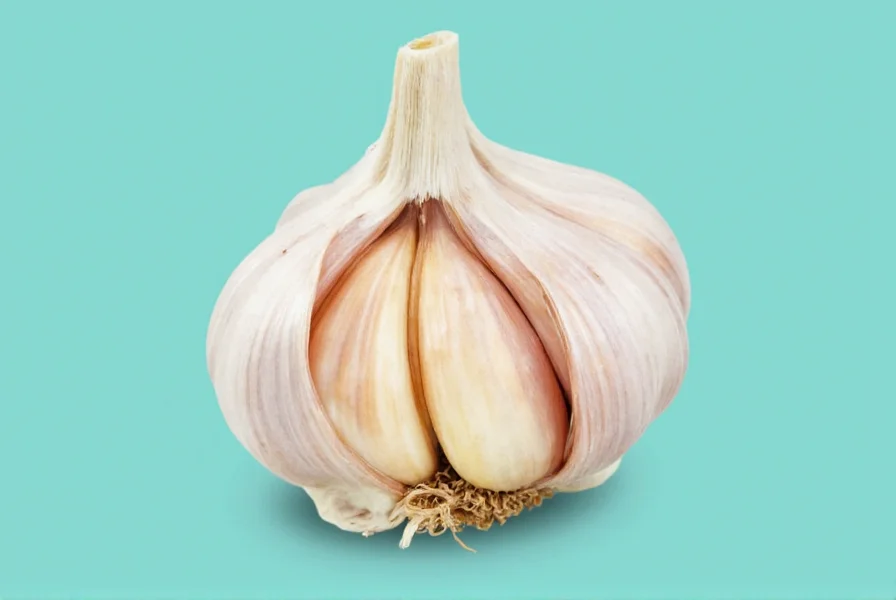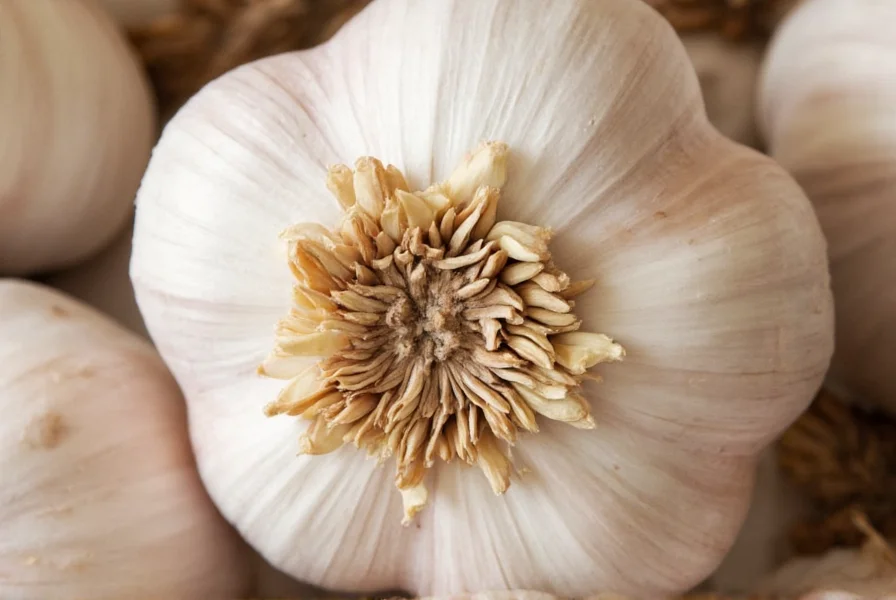When you're preparing a recipe that calls for a specific number of garlic cloves, understanding the typical clove count in a bulb becomes essential. Most grocery store garlic—usually the softneck variety—contains approximately 10-12 individual cloves per bulb. However, this number isn't fixed and can vary significantly based on several factors.
Factors That Determine Clove Count in Garlic Bulbs
The number of cloves in a garlic bulb depends primarily on three key elements: garlic variety, growing conditions, and bulb maturity at harvest. Understanding these factors helps explain why your garlic bulbs might contain different numbers of cloves from one purchase to the next.
Garlic Variety Differences
Garlic falls into two main categories, each with distinct clove characteristics:
| Garlic Type | Typical Clove Count | Characteristics |
|---|---|---|
| Softneck Garlic | 10-20 cloves | Milder flavor, longer shelf life, flexible stalks, most common in supermarkets |
| Hardneck Garlic | 4-12 cloves | Stronger flavor, shorter shelf life, rigid central stalk, larger individual cloves |
| Elephant Garlic | 4-6 cloves | Actually a leek relative, milder flavor, much larger individual cloves |
Growing Conditions Impact
Environmental factors significantly influence clove development. Garlic grown in optimal conditions—well-drained soil, adequate sunlight, and proper watering—tends to produce bulbs with more cloves. Soil quality, climate, and planting density all contribute to the final clove count. Commercial growers often optimize these conditions to produce consistently sized bulbs with predictable clove counts for supermarket distribution.

How to Count Cloves in a Garlic Bulb
Before separating cloves, you can estimate the count by examining the bulb's exterior. Look for visible segments or lobes on the bulb's surface—each lobe typically corresponds to one clove. Larger bulbs generally contain more cloves, though this isn't always consistent. When preparing garlic for cooking, remember that smaller cloves have a more concentrated flavor than larger ones, which affects recipe outcomes.
Practical Implications for Cooking and Gardening
Knowing the average number of cloves in a garlic bulb helps with meal planning and grocery shopping. If a recipe calls for 6 cloves and you're using a standard bulb with 10-12 cloves, you'll have leftovers that can be stored properly. For gardeners, understanding clove count variation helps set realistic expectations for harvest yields. When planting, each clove will grow into a new bulb, so the number of cloves directly determines potential multiplication.
Why Garlic Bulb Clove Counts Matter
The variation in clove count affects more than just cooking measurements. For commercial producers, consistent clove counts are important for packaging and pricing. In culinary applications, the number of cloves influences flavor concentration—bulbs with more smaller cloves often deliver a more intense garlic flavor than those with fewer large cloves. This knowledge helps both home cooks and professional chefs adjust recipes for optimal results.

Measuring Garlic Beyond Clove Count
When precision matters in recipes, measuring garlic by weight or volume provides more consistent results than counting cloves. A standard garlic clove yields approximately 1/2 teaspoon of minced garlic or 1 teaspoon of chopped garlic. For serious culinary applications, consider using a kitchen scale—4-7 grams per average clove provides the most accurate measurement across different garlic varieties.
Frequently Asked Questions
How many cloves are typically in one bulb of garlic?
Most standard garlic bulbs contain between 10 to 12 cloves, though this can range from 4 to 20 depending on the garlic variety. Softneck garlic (common in supermarkets) usually has 10-20 cloves, while hardneck varieties typically contain 4-12 cloves per bulb.
Does the size of the garlic bulb determine how many cloves it has?
Not necessarily. While larger bulbs often contain more cloves, the relationship isn't always direct. Some large bulbs may have fewer but larger cloves, while smaller bulbs might contain numerous tiny cloves. The garlic variety is a more reliable indicator of clove count than overall bulb size.
Why do some garlic bulbs have more cloves than others?
The number of cloves varies primarily due to garlic variety (softneck vs. hardneck), growing conditions, soil quality, climate, and harvest timing. Commercially grown garlic is often cultivated to produce consistent clove counts, while heirloom or garden-grown varieties show more natural variation.
How can I tell how many cloves are in a garlic bulb before peeling it?
Examine the bulb for visible segments or lobes on its exterior—each lobe typically corresponds to one clove. Larger, more defined lobes suggest fewer but larger cloves, while numerous small protrusions indicate more individual cloves. The papery skin may also show ridges that correspond to the clove divisions beneath.
Is there a difference in flavor between garlic bulbs with many small cloves versus few large cloves?
Yes, bulbs with numerous small cloves generally have a more intense, pungent flavor compared to bulbs with fewer large cloves, which tend to be milder. This is why chefs often adjust garlic quantities based on clove size rather than just counting cloves when preparing recipes that require precise flavor balance.










 浙公网安备
33010002000092号
浙公网安备
33010002000092号 浙B2-20120091-4
浙B2-20120091-4